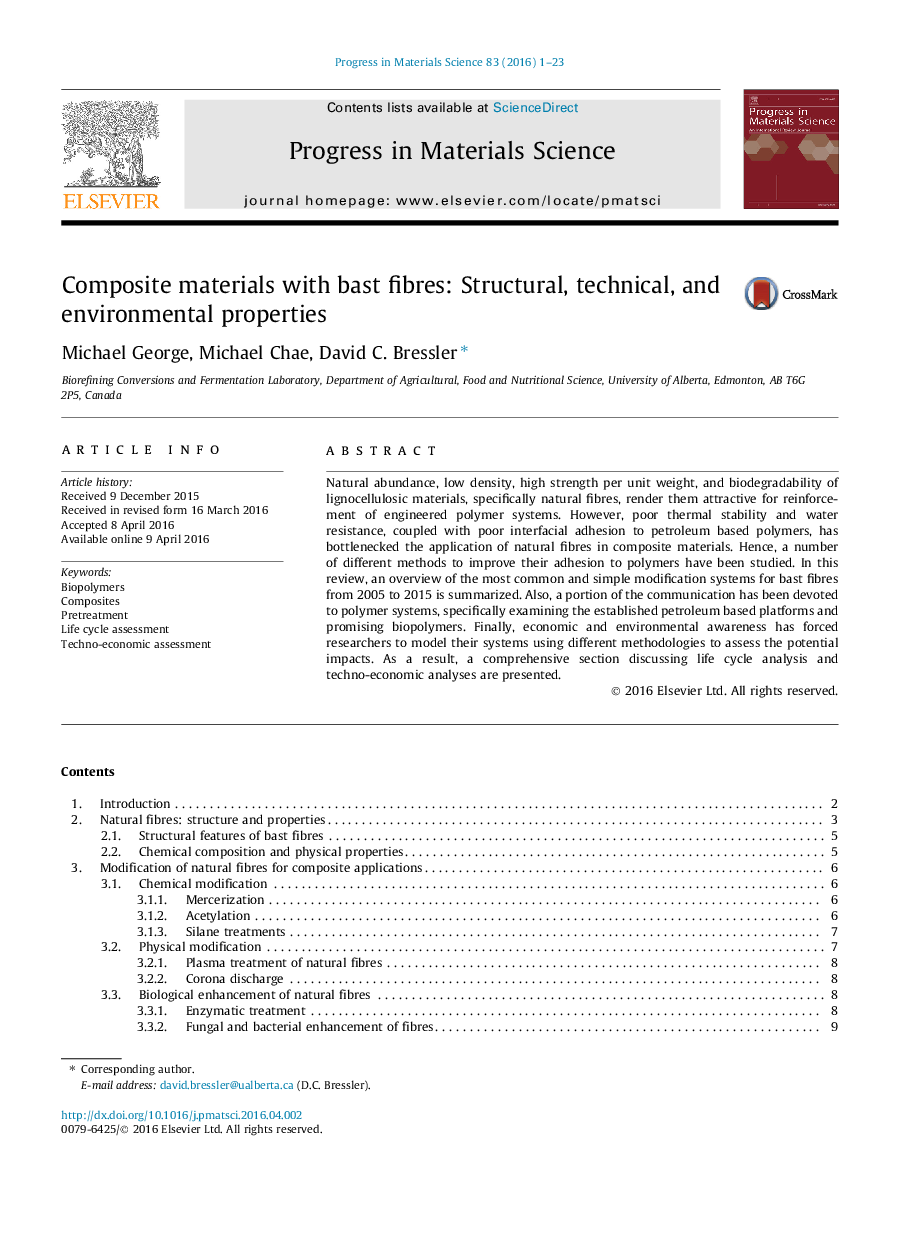| Article ID | Journal | Published Year | Pages | File Type |
|---|---|---|---|---|
| 1655794 | Progress in Materials Science | 2016 | 23 Pages |
Natural abundance, low density, high strength per unit weight, and biodegradability of lignocellulosic materials, specifically natural fibres, render them attractive for reinforcement of engineered polymer systems. However, poor thermal stability and water resistance, coupled with poor interfacial adhesion to petroleum based polymers, has bottlenecked the application of natural fibres in composite materials. Hence, a number of different methods to improve their adhesion to polymers have been studied. In this review, an overview of the most common and simple modification systems for bast fibres from 2005 to 2015 is summarized. Also, a portion of the communication has been devoted to polymer systems, specifically examining the established petroleum based platforms and promising biopolymers. Finally, economic and environmental awareness has forced researchers to model their systems using different methodologies to assess the potential impacts. As a result, a comprehensive section discussing life cycle analysis and techno-economic analyses are presented.
